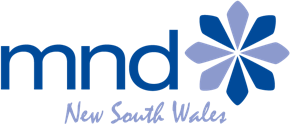The first quarter of 2025 has passed, and the MND NSW Info Line has responded to over 300 enquiries during this time. People have reached out with a variety of questions, and this month’s top five topics include: patient referrals, accessing equipment, physical activity, genetics and avoiding pressure sores.
1. I am a health professional - how do I refer a patient to MND NSW?
The easiest way to refer someone with MND who lives in NSW, ACT or the NT to MND NSW is to direct and encourage them to complete our online intake form. Alternatively, they can contact the MND NSW Info Line on 1800 777 175 or
2. I have MND, can I still exercise?
It is important to consult a physiotherapist with knowledge of MND about the type and frequency of exercise that will be suitable and safe for you.
Participating in physical activity can assist in increasing range of motion, reducing stiffness and pain and improving both physical and emotional wellbeing.
Activities such as walking, gardening, yoga and hydrotherapy can help to maintain and strengthen or maintain healthy muscles that have not been affected by MND.
For further information, visit:
3. How do I access equipment from FlexEquip?
Requests for FlexEquip assistive technology (aids and equipment) are processed when an online referral is received for the item from a health professional who has assessed your needs and requirements in your primary residence. They select items using the FlexEquip Product library and submit a referral using FlexEquip Referral Cart.
Accessing equipment from FlexEquip can be completed in four simple steps:
- Register for the FlexEquip program by first completing the intake form or contacting the Info Line on 1800 777 175. We will then send you a FlexEquip Service Agreement to review and sign.
- Speak with your allied health team (occupational therapist, speech pathologist and physiotherapist) about your equipment needs.
- The health professional then submits a referral for clinically required equipment using the FlexEquip Referral Cart.
- FlexEquip will process the referral and organise delivery.
For further information, visit:
4. How can I prevent pressure sores?
Pressure sores occur due to constant pressure or friction on the skin and underlying tissues. People with MND are at higher risk due to reduced mobility, which can lead to prolonged periods in the same position.
Prevention strategies include:
- Change positions regularly to relieve pressure.
- Check your skin daily for redness or sores.
- Keep skin clean and moisturized to prevent breakdown.
An occupational therapist can help to prescribe equipment to further reduce the risk of developing pressure sores. Pressure care equipment aims to distribute weight evenly and improve circulation.
The following pressure care equipment can be hired from FlexEquip:
- Cushions
- Matresses
- Armchair overlays.
- Electric recliners.
For further information, visit:
5. Is MND genetic and will my children inherit MND from me?
Familial MND accounts for up to 15% of MND cases, meaning more than one family member has been affected across generations. It is caused by inherited genetic mutations, with up to a 50% chance of being passed to children if a parent carries an MND-related gene mutation.
The most commonly known MND-related genetic mutations include:
- SOD1
- C9ORF72
- TARDP (TDP-43)
- FUS
- OPTN
- UBQLN2
Genetic counselling and testing can help families assess their risk, though not everyone who inherits a mutation will develop MND. Scientists continue to study why some carriers develop the disease while others do not.
For further information visit:
- Does MND run in a family or have a genetic connection?
- MND Genies
- Motor Neurone Disease Information & Support | MND Australia
References-
Ask us a question!
Get in touch with us via 1800 777 175 or
Your question might be in our next month’s Top-5!
